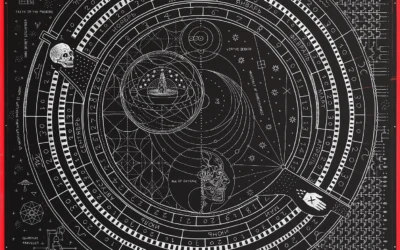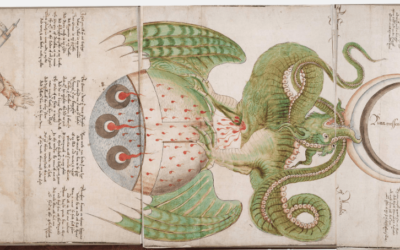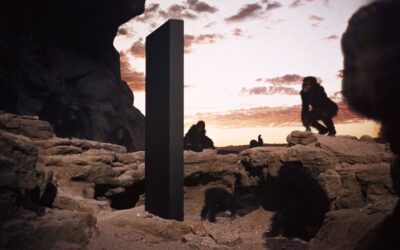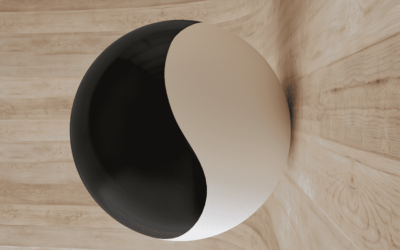
Read Part 1 Here: https://gettherapybirmingham.com/post-therapy-spirituality-and-mysticism/
Throughout history, mystics have emerged from diverse religious backgrounds, including Christianity, Islam, Judaism, Hinduism, and Buddhism. These individuals have often challenged the established doctrines and hierarchies of their respective traditions, emphasizing the importance of personal experience over dogma and ritual. This has led to a complex and sometimes contentious relationship between mysticism and organized religion.
In the Christian tradition, the Catholic Church has had an ambivalent relationship with mystics such as Meister Eckhart (c. 1260-1328). Eckhart, a German Dominican friar, taught that the ultimate goal of spiritual life was the union of the soul with God. His ideas, which emphasized the importance of detachment from worldly concerns and the cultivation of inner stillness, were seen as controversial by some church authorities. While Eckhart was never formally condemned during his lifetime, some of his teachings were later deemed heretical by the Church. Post mortem, the church chose to honor Eckhart.
The tension between mysticism and organized religion is rooted in the inherent challenge that mystical experience poses to religious hierarchy and doctrine. Mystics often claim a direct, unmediated experience of the divine, which can be seen as a threat to the authority of religious institutions. Moreover, the ineffable nature of mystical experience often defies the clear-cut categories and definitions that religious doctrines rely upon.
Main Ideas and Key Points:
- Mysticism and organized religion often have a complex relationship, with mystics challenging established doctrines while religious institutions sometimes view mystical practices with suspicion.
- There are two main approaches to mysticism:
- Apophatic mysticism emphasizes the ineffability of the divine and focuses on negation and detachment.
- Cataphatic mysticism uses positive imagery and language to describe divine experiences.
- Carl Jung and Edward Edinger’s work in depth psychology attempted to bridge mysticism and psychology, introducing concepts like the collective unconscious and the ego-self axis.
- The Catholic Church has had an ambivalent relationship with mysticism, recognizing its value while also being wary of practices that may deviate from orthodox doctrine.
- Neurological studies have shown that mystical experiences involve decreased activity in the prefrontal cortex (associated with ego functions) and increased activity in subcortical regions (associated with intuition and emotion).
- Recent research has explored the role of theta waves in mystical experiences and the potential neurological differences between apophatic and cataphatic mysticism.
- Various experiments and studies have been conducted to explore mystical and religious experiences, including:
- The Marsh Chapel Experiment (1962) and its follow-up (2006)
- Brain imaging studies of nuns and meditators during mystical experiences
- Investigations into psychedelics and spiritual awakening
- Studies on near-death experiences and their mystical aspects
- These studies have contributed to our understanding of the neurological and psychological mechanisms underlying mystical experiences and their potential therapeutic benefits.
Apophatic vs Cataphatic Mystics:
Within the mystical tradition, there is a further distinction between apophatic and cataphatic approaches. Apophatic mysticism, also known as the “via negativa,” emphasizes the inadequacy of language and concepts to describe the divine, and it focuses on the practice of negation and detachment as a means of approaching ultimate reality. Cataphatic mysticism, on the other hand, emphasizes the use of positive imagery, symbols, and language to describe the divine, and it focuses on the cultivation of virtues and the imitation of sacred figures.
Apophatic mysticism stresses the ineffability and transcendence of the divine, and the need to let go of all concepts, images, and attachments in order to approach it. This approach is exemplified by figures such as Pseudo-Dionysius the Areopagite, a 5th-6th century Christian mystic who wrote extensively on the via negativa. In his works, such as “The Mystical Theology,” Pseudo-Dionysius emphasizes the need to abandon all sense perceptions and intellectual concepts in order to enter into the “divine darkness” beyond all knowing.
Similarly, Meister Eckhart, a 13th-14th century Dominican friar, teaches that the path to God involves a radical letting go of all attachments and concepts, including the concept of God itself. For Eckhart, the ultimate goal is to achieve a state of “gelassenheit,” or detachment, in which the soul is emptied of all images and desires and becomes one with the divine nothingness.
Other examples of apophatic mystics include John of the Cross, a 16th century Spanish Carmelite friar, who writes of the “dark night of the soul” as a necessary stage on the path to union with God, and Ramana Maharshi, a 20th century Indian sage, who teaches a form of self-inquiry that involves negating all sense of individual identity in order to realize the true self beyond all concepts and limitations.
In contrast, cataphatic mysticism emphasizes the use of positive imagery, symbols, and language as a means of approaching and describing the divine. This approach is exemplified by figures such as Teresa of Ávila, a 16th century Spanish Carmelite nun, who writes extensively of her visions and ecstasies, and the elaborate imagery and symbolism she uses to describe them.
Similarly, Rumi, a 13th century Persian poet and Sufi mystic, uses vivid and sensual imagery to convey the ecstatic nature of divine love, often drawing on the language of romantic and erotic love to describe the soul’s relationship with God. Ibn ‘Arabi, a 12th-13th century Andalusian mystic, develops a complex metaphysical system based on the concept of the “unity of being,” in which all of reality is seen as a manifestation of the divine names and attributes.
Other examples of cataphatic mystics include Kabir, a 15th-16th century Indian poet and saint, who uses vivid and often paradoxical imagery to convey the nature of the divine, and the Beguines, a group of lay Christian women in the 13th-14th centuries, who developed a form of affective mysticism that emphasized the cultivation of virtues and the imitation of Christ.
While some mystics can be clearly categorized as either apophatic or cataphatic, others have incorporated elements of both approaches in their teachings and practices. For example, some Zen masters, such as Dogen, emphasize the need to let go of all concepts and attachments, while also using positive imagery and language to point to the nature of reality.
Similarly, the Beguines often combined a cataphatic emphasis on the cultivation of virtues and the imitation of Christ with an apophatic emphasis on the need to let go of all attachments and desires in order to achieve union with God. This suggests that the distinction between apophatic and cataphatic mysticism is not always clear-cut, and that many mystics have drawn on both approaches in their teachings and practices.
The relationship between apophatic and cataphatic mysticism can be seen as a reflection of the broader tension between the transcendent and immanent dimensions of the divine. Apophatic mysticism emphasizes the transcendence and ineffability of the divine, and the need to let go of all concepts and attachments in order to approach it. Cataphatic mysticism, on the other hand, emphasizes the immanence of the divine, and the way in which it can be experienced and described through positive imagery and language.
At the same time, both approaches share a common goal of achieving a direct and immediate experience of the divine, beyond the limitations of language and concepts. Whether through the negation of all concepts and attachments, or through the use of positive imagery and symbols, the ultimate aim of both apophatic and cataphatic mysticism is to transcend the boundaries of the self and achieve a state of union or communion with the ultimate reality.
This suggests that, despite their differences, apophatic and cataphatic mysticism are not necessarily opposed or mutually exclusive, but can be seen as complementary approaches to the same ultimate goal. By drawing on both the negative and positive aspects of language and experience, mystics from both traditions have sought to point beyond the limitations of concepts and descriptions, and to evoke a direct and immediate experience of the divine.
Psychology an Mysticism in the Jungian School:
The development of depth psychology, particularly in the work of Carl Jung (1875-1961), represents a significant attempt to bridge the gap between mysticism and psychology. Jung’s theory of the collective unconscious and his emphasis on the importance of symbolism and myth in understanding the human psyche were heavily influenced by his study of various mystical traditions. However, Jung’s relationship with the Catholic Church was complex; while some Catholic thinkers found value in his ideas, others saw his work as incompatible with Church doctrine.
One of the most influential thinkers to grapple with this tension was Edward Edinger (1922-1998), a prominent Jungian analyst and author. In his work, Edinger introduced the concept of the “ego-self axis,” a model for understanding the relationship between the conscious ego and the deeper, more expansive self that lies at the core of our being.
According to Edinger, the ego represents our conscious sense of identity, the part of us that navigates the demands of daily life and interacts with the external world. The self, on the other hand, represents the totality of our being, including both conscious and unconscious elements. The self is the source of our deepest values, aspirations, and potential, and it is often experienced as a sense of meaning, purpose, or connection to something greater than ourselves.
The ego-self axis refers to the dynamic interplay between these two aspects of our being. In a healthy individual, the ego serves as a bridge between the self and the outside world, allowing us to express our unique qualities and potentials in a way that is grounded in reality. However, when the ego becomes too rigid or inflated, it can become disconnected from the self, leading to feelings of alienation, emptiness, or despair.
Edinger argued that the process of psychotherapy involves a gradual reintegration of the ego and the self, allowing individuals to access the deeper wisdom and creativity that lies within them. This process often involves a confrontation with the shadow, the unconscious aspects of ourselves that we have rejected or denied. By bringing these hidden elements into conscious awareness, we can begin to heal the splits within our psyche and develop a more authentic and integrated sense of self.
One of the key challenges in this process is navigating the tension between the objective and subjective dimensions of experience. On one hand, psychotherapy relies on empirical methods and evidence-based practices to assess and treat mental health conditions. Diagnostic categories, standardized assessments, and measurable outcomes are essential tools in the modern practice of psychotherapy.
At the same time, the subjective experience of the individual – their unique thoughts, feelings, and perceptions – is at the heart of the therapeutic process. Psychotherapy is fundamentally an interpersonal endeavor, one that relies on the development of a deep and trusting relationship between therapist and client. This relationship creates a safe and supportive space for individuals to explore their inner world, to give voice to their deepest fears and desires, and to discover new possibilities for growth and change.
Edinger’s concept of the ego-self axis provides a framework for holding this tension between the objective and subjective dimensions of experience. By recognizing that the ego and the self are both essential aspects of our being, and by working to integrate them in a way that is grounded in reality, psychotherapy can help individuals to develop a more authentic and fulfilling sense of self.
This process is not always easy or straightforward. The ego, with its need for control and certainty, may resist the call to surrender to the deeper wisdom of the self. The self, with its expansive and often mysterious nature, may feel threatening or overwhelming to the ego. The therapist’s role is to provide guidance and support as individuals navigate this complex terrain, helping them to develop the skills and insights needed to bridge the gap between their conscious and unconscious minds.
One of the key tools in this process is the use of symbols and metaphors. Symbols, such as dreams, myths, and artworks, provide a language for expressing the deep and often ineffable experiences of the self. By exploring these symbols in the context of the therapeutic relationship, individuals can begin to access the wisdom and creativity that lies within them, and to integrate this into their conscious sense of self.
Another important aspect of the therapeutic process is the cultivation of mindfulness and self-reflection. By learning to observe their thoughts, feelings, and sensations with curiosity and non-judgment, individuals can begin to develop a more objective and compassionate relationship with their inner world. This, in turn, can help to reduce the power of negative self-talk, limiting beliefs, and other barriers to growth and change.
Ultimately, the goal of psychotherapy is not to eliminate the tension between the objective and subjective dimensions of experience, but rather to help individuals to navigate this tension in a way that is healthy and authentic. By developing a strong and flexible ego-self axis, individuals can learn to express their unique qualities and potentials in a way that is grounded in reality, while also remaining open to the deeper wisdom and creativity that lies within them.
This process is not a one-time event, but rather a lifelong journey of self-discovery and growth. As individuals continue to explore their inner world and to integrate their experiences, they may find that their sense of self becomes more expansive and inclusive, encompassing not only their individual qualities and experiences, but also a sense of connection to something greater than themselves.
The Jewish philosopher Martin Buber (1878-1965) also explored the intersection of mysticism and psychology, but his approach differed from Jung’s in significant ways. Buber emphasized the importance of dialogue and the “I-Thou” relationship in spiritual life, and he criticized Jung’s concept of the collective unconscious as too analytically impersonal and deterministic. This disagreement reflects the ongoing debate within the field of psychology about the nature of the self and the role of spirituality in mental health.
The Catholic Church’s Ambivalent Relationship with Mysticism and Direct Spiritual Practices:
 Throughout its history, the Catholic Church has had a complex and often ambivalent relationship with mysticism and direct spiritual practices. On one hand, the Church has a rich tradition of mystical theology, exemplified by figures such as Meister Eckhart, Teresa of Ávila, and John of the Cross. These individuals sought to cultivate a direct and intimate relationship with the divine, often through practices such as contemplative prayer, meditation, and asceticism.
Throughout its history, the Catholic Church has had a complex and often ambivalent relationship with mysticism and direct spiritual practices. On one hand, the Church has a rich tradition of mystical theology, exemplified by figures such as Meister Eckhart, Teresa of Ávila, and John of the Cross. These individuals sought to cultivate a direct and intimate relationship with the divine, often through practices such as contemplative prayer, meditation, and asceticism.
At times, the Church has recognized the value of these mystical practices and has even encouraged their cultivation among the faithful. In recent years, some Church leaders have argued that a renewed emphasis on mysticism and spirituality is necessary in order to remain relevant in an increasingly secular and pluralistic world. They suggest that by fostering a more experiential and personal relationship with the divine, the Church can help individuals to find meaning and purpose in their lives, and to navigate the challenges and uncertainties of the modern world.
However, at other times, the Church has viewed mysticism and direct spiritual practices with suspicion or even hostility. Some clergy and theologians who have sought to incorporate insights from comparative religion, mythology, or Jungian psychology into their teachings have been accused of heresy or of deviating from orthodox doctrine. The Church has also been wary of practices such as Reiki or other forms of energy healing, which are often seen as incompatible with Catholic theology and sacramental practice.
This ambivalence reflects a larger tension within the Church between the desire for doctrinal clarity and the recognition of the inherent mystery and ineffability of the divine. On one hand, the Church has a responsibility to preserve and transmit the core teachings of the faith, and to ensure that these teachings are not distorted or diluted by outside influences. On the other hand, the Church also recognizes that the divine is ultimately beyond human comprehension, and that individuals must be free to explore and express their own unique relationship with God.
The tension between these two impulses can be seen in the Church’s response to the work of Carl Jung, the Swiss psychiatrist and founder of analytical psychology. Jung’s theories of the collective unconscious, archetypes, and the process of individuation have had a significant influence on contemporary spirituality and mysticism, and have been embraced by many individuals seeking to integrate their psychological and spiritual development.
However, Jung’s ideas have also been met with skepticism or outright rejection by some Catholic thinkers, who argue that they are incompatible with orthodox Christian theology. These critics suggest that Jung’s emphasis on the individual psyche and the role of mythology and symbolism in shaping human experience can lead to a kind of relativism or subjectivism that undermines the objective truth claims of the Church.
Despite these criticisms, many Catholic thinkers have found value in Jung’s work and have sought to integrate his insights into their own spiritual and theological reflections. They argue that Jung’s emphasis on the transformative power of the unconscious and the importance of integrating the shadow aspects of the psyche can be seen as a modern expression of the ancient Christian practice of examining conscience and seeking spiritual growth through self-knowledge and humility.
Ultimately, the Church’s relationship with mysticism and direct spiritual practices remains a complex and ongoing dialogue, shaped by the tensions between tradition and innovation, authority and experience, and the desire for clarity and the recognition of mystery. As the Church continues to navigate these tensions, it will need to find ways to honor the depth and diversity of the human encounter with the divine, while also remaining faithful to the core teachings and practices of the Christian tradition.
This process may involve a renewed emphasis on the experiential and transformative dimensions of the faith, as well as a greater openness to dialogue with other spiritual and philosophical traditions. It may also require a more nuanced and contextual approach to the discernment of orthodoxy and heresy, one that is able to distinguish between genuine threats to the integrity of the faith and the legitimate exploration of new forms of spiritual expression.
Ultimately, the goal of this process is not to resolve the tensions inherent in the Church’s relationship with mysticism and direct spiritual practices, but rather to create a space where these tensions can be held in a spirit of humility, compassion, and openness to the movement of the Holy Spirit. By embracing the mystery and complexity of the human encounter with the divine, the Church can continue to be a source of healing, guidance, and transformation for individuals and communities across the world.
Neurology of Mysticism:
Recent neurological findings have shed new light on the relationship between mystical experience and the functioning of the brain. Studies have shown that the prefrontal cortex, which is associated with ego-based functions such as language, temporal thought, and self-awareness, becomes less active during mystical experiences. At the same time, the subcortical regions of the brain, which are associated with intuition, emotion, and traumatic memory, become more active. This suggests that mystical experience involves a shift away from the ego-based functioning of the prefrontal cortex and towards the more intuitive and experiential functioning of the subcortical brain.
Recent neurological findings have provided fascinating insights into the brain states associated with spiritual and mystical experiences. One of the most intriguing discoveries is the role of theta waves in these experiences. Theta waves are a type of brain wave that occurs during deep relaxation, meditation, and hypnagogic states (the transition between wakefulness and sleep). They are associated with increased creativity, intuition, and access to unconscious material.
Studies have shown that during mystical experiences, there is a significant increase in theta wave activity in the brain. This suggests that these experiences involve a shift into a more relaxed and receptive state of consciousness, where the boundaries between the conscious and unconscious mind become more permeable. In this state, individuals may have access to deeper levels of intuition, insight, and emotional processing, which can lead to profound experiences of unity, transcendence, and spiritual connection.
Interestingly, the increase in theta wave activity during mystical experiences is often accompanied by a decrease in activity in the prefrontal cortex, which is associated with ego-based functions such as language, temporal thought, and self-awareness. This suggests that mystical experiences involve a temporary suspension or transcendence of the ordinary ego state, allowing for a more direct and unmediated experience of reality.
At the same time, mystical experiences are often associated with increased activity in the subcortical regions of the brain, such as the limbic system and the brainstem. These regions are involved in emotional processing, intuition, and the regulation of bodily functions, and are thought to be more closely connected to the unconscious mind. Increased activity in these regions during mystical experiences may reflect a deeper engagement with the emotional and intuitive aspects of the psyche, as well as a heightened awareness of bodily sensations and energetic states.
These neurological findings have important implications for our understanding of the nature of mystical experience and its relationship to the functioning of the brain. They suggest that mystical experiences are not merely subjective or illusory, but are grounded in specific neurological states that can be objectively measured and studied. At the same time, they highlight the complex interplay between different regions of the brain, and the way in which shifts in brain activity can lead to profound changes in consciousness and perception.
One of the key insights of these neurological studies is that mystical experiences involve a temporary suspension or transcendence of the ordinary ego state, which is mediated by the prefrontal cortex. This suspension of the ego allows for a more direct and unmediated experience of reality, in which the boundaries between self and other, subject and object, become more fluid and permeable. In this state, individuals may experience a sense of unity, wholeness, and interconnectedness that transcends their ordinary sense of self and identity.
This understanding of mystical experience as involving a suspension of the ego has important implications for psychotherapy and personal growth. It suggests that practices such as meditation, mindfulness, and self-inquiry, which aim to cultivate a more direct and unmediated experience of reality, may be valuable tools for promoting psychological healing and transformation. By learning to let go of the ordinary ego state and access deeper levels of awareness and insight, individuals may be able to tap into the transformative potential of mystical experience and integrate its insights into their daily lives.
At the same time, these neurological findings also highlight the importance of grounding mystical experience in a broader context of psychological and spiritual development. While the temporary suspension of the ego can be a powerful catalyst for growth and transformation, it is important to recognize that the ego serves a vital function in navigating the challenges and complexities of daily life. A mature spirituality requires the ability to integrate the insights of mystical experience into a stable and functional sense of self, one that is able to navigate the demands of the world with wisdom, compassion, and skil
The Neurological difference of Apophatic and Cataphatic Mystics
The neurological differences between apophatic and cataphatic mysticism are a fascinating area of speculation and research. While there is still much to be learned about the neural correlates of these different approaches to mystical experience, there are some intriguing possibilities that are worth exploring.
One possible difference between apophatic and cataphatic mysticism may lie in the relative activation of different brain regions during mystical experiences. Apophatic mysticism, with its emphasis on negation, detachment, and the ineffability of the divine, may involve a greater deactivation of the default mode network (DMN), a set of brain regions that are associated with self-referential processing, mind-wandering, and narrative thinking.
Studies have shown that practices such as meditation and contemplative prayer, which are often associated with apophatic mysticism, can lead to a decrease in DMN activity, as well as an increase in activity in brain regions associated with present-moment awareness, such as the insula and the anterior cingulate cortex. This suggests that apophatic mysticism may involve a shift away from self-referential and narrative modes of thinking, and towards a more immediate and non-conceptual awareness of the present moment.
In contrast, cataphatic mysticism, with its emphasis on positive imagery, symbols, and language, may involve a greater activation of brain regions associated with visual and linguistic processing, such as the occipital and temporal lobes. The use of vivid and elaborate imagery in cataphatic mysticism, such as the visions of Teresa of Ávila or the metaphysical system of Ibn ‘Arabi, may engage these regions to a greater degree than the more apophatic approach of negation and detachment.
Furthermore, the emphasis on the cultivation of virtues and the imitation of sacred figures in cataphatic mysticism may involve a greater activation of brain regions associated with social cognition and empathy, such as the temporoparietal junction and the medial prefrontal cortex. These regions are involved in processes such as perspective-taking, emotional attunement, and the understanding of social norms and values, which may be more relevant to the cataphatic approach of positive identification and imitation.
Another possible difference between apophatic and cataphatic mysticism may lie in the relative balance between the sympathetic and parasympathetic branches of the autonomic nervous system. The sympathetic nervous system is associated with arousal, stress, and the “fight or flight” response, while the parasympathetic nervous system is associated with relaxation, rest, and the “rest and digest” response.
Apophatic mysticism, with its emphasis on detachment and the letting go of all concepts and attachments, may involve a greater activation of the parasympathetic nervous system, leading to a state of deep relaxation and inner stillness. This is consistent with the descriptions of some apophatic mystics, such as Meister Eckhart’s concept of “gelassenheit,” or the “prayer of quiet” described by Teresa of Ávila, which involve a profound sense of peace and tranquility.
In contrast, cataphatic mysticism, with its emphasis on ecstatic visions, intense emotions, and the cultivation of virtues, may involve a greater activation of the sympathetic nervous system, leading to a state of heightened arousal and emotional intensity. This is consistent with the descriptions of some cataphatic mystics, such as Rumi’s ecstatic poetry or the “transverberation” of Teresa of Ávila, which involve intense feelings of love, joy, and union with the divine.
Of course, these are only speculative possibilities, and much more research is needed to confirm or refute them. It is also important to note that the distinction between apophatic and cataphatic mysticism is not always clear-cut, and that many mystics have incorporated elements of both approaches in their teachings and practices.
Furthermore, the neural correlates of mystical experience are likely to be complex and multifaceted, involving a range of brain regions and processes that interact in dynamic and context-dependent ways. The subjective nature of mystical experience also makes it difficult to study using traditional scientific methods, and there may be important individual differences in the way that different people experience and interpret these states.
Research Studies in Mysticism and Religious Experience
Throughout history, there have been many wild and adventurous experiments conducted in the name of mysticism and the study of religious experience. These experiments have often pushed the boundaries of what is considered safe or ethical, and have sometimes led to controversial or even dangerous outcomes. Here are some of the most notable examples:
1. The Marsh Chapel Experiment (1962):
Also known as the “Good Friday Experiment,” this study was conducted by Walter Pahnke at Harvard University. Pahnke administered psilocybin, a psychedelic compound found in certain mushrooms, to a group of divinity students during a Good Friday service. Many of the participants reported profound mystical experiences, including a sense of unity, transcendence, and sacredness. This study helped to spark the psychedelic revolution of the 1960s and has been widely cited in the literature on mysticism and altered states of consciousness.
2. The Miracle of Marsh Chapel (2006):
A follow-up to the original Marsh Chapel Experiment, this study was conducted by Roland Griffiths at Johns Hopkins University. Griffiths administered psilocybin to a group of volunteers in a carefully controlled setting, with a focus on creating a supportive and spiritual environment. Many of the participants reported profound mystical experiences, similar to those described in the original study. This study helped to revive interest in the potential therapeutic uses of psychedelics and has led to a wave of new research in this area.
3. The Mystical Brain (2005):
This study, conducted by Mario Beauregard at the University of Montreal, used functional magnetic resonance imaging (fMRI) to study the brains of Carmelite nuns during mystical experiences. The nuns reported feelings of unity, transcendence, and intense love during their experiences, and the fMRI scans showed activation in several brain regions associated with positive emotions and self-transcendence. This study helped to provide a neurological basis for mystical experiences and has been widely cited in the literature on neurotheology.
4. The Mystical Brain Revisited (2012):
A follow-up to the original Mystical Brain study, this experiment was also conducted by Mario Beauregard at the University of Montreal. This time, the researchers used fMRI to study the brains of meditators from various spiritual traditions during mystical experiences. The results were similar to those of the original study, with activation in brain regions associated with positive emotions and self-transcendence. This study helped to confirm the findings of the original study and to extend them to a broader range of spiritual practices.
5. The Electric Kool-Aid Acid Test (1964):
While not a formal scientific experiment, this series of events, chronicled by Tom Wolfe in his book of the same name, involved a group of psychedelic adventurers known as the Merry Pranksters. Led by Ken Kesey, the Pranksters traveled across the United States in a bus dubbed “Further,” experimenting with LSD and other psychedelics along the way. While controversial and at times dangerous, these experiments helped to popularize the use of psychedelics as a means of spiritual exploration and self-discovery.
6. The Mystical Brain in the Lab (2021):
Recently, a team of researchers at Johns Hopkins University conducted a study that used a variety of neuroimaging and physiological measures to track real-time brain changes in experienced meditators during different types of mystical practices. This included Sufi whirling, Hindu tantric meditation, and shamanic journeying. The results showed distinct patterns of brain activation and deactivation, as well as changes in heart rate and brain waves, depending on the type of mystical practice being engaged. This study helps to shed light on the diverse ways that mystical experiences can be evoked and their corresponding neurophysiological correlates.
7. Fire Walking and Brain Stimulation (2015):
A team of neuroscientists conducted a study that involved taking brain scans of participants immediately before and after they completed a ritualistic fire walking ceremony. Participants reported feelings of awe, self-transcendence, and connectedness. Brain scans revealed that after the ceremony, participants had significantly reduced activity in their prefrontal cortex, a brain region associated with higher-order cognitive processing and sense of self. The researchers proposed that this temporary deactivation may allow for more primal, mystical experiences to emerge.
8. Psychedelics and Spiritual Awakening (2019):
A large-scale survey study conducted by researchers at the University of Zurich gathered data from over 4,000 individuals who reported having a spiritual awakening or mystical-type experience after using a psychedelic substance. The study found that the majority of these experiences were rated as among the most personally meaningful and spiritually significant events of the respondents’ lives, with many reporting lasting positive changes in their mental health, well-being, and spiritual perspectives.
9. Virtual Reality and Mystical Experience (2020):
A novel study at the University of Auckland used a bespoke virtual reality (VR) environment to simulate a mystical experience using artistic renderings of fractal geometry, coupled with specially composed music and a spoken philosophical narrative. Participants who underwent this VR experience reported increased feelings of awe, self-transcendence, and interconnectedness, as well as decreased feelings of anxiety and depression. This pioneering study highlights the potential for using technology to evoke mystical experiences in a controlled setting.
10. Near-Death Experiences and Mystical Insights (2012):
A groundbreaking study published in the journal Resuscitation gathered in-depth accounts from individuals who had experienced a near-death experience (NDE) during a cardiac arrest. The majority of these individuals reported vivid mystical experiences, often characterized by feelings of love, peace, and unity, as well as encounters with deceased relatives or spiritual beings. Many also reported gaining profound spiritual insights and a reduced fear of death. This study helped to validate the reality and transformative power of NDEs and their associated mystical experiences.
These experiments, while often controversial and sometimes risky, have helped to push the boundaries of our understanding of mystical experiences and their underlying neurological and psychological mechanisms. They have also helped to spark new interest in the potential therapeutic and transformative benefits of altered states of consciousness, and have paved the way for a new generation of research in this fascinating and important field.
We also conduct way more wild and crazy top secret experiments like these in the basement at Taproot Therapy Collective!
Just kidding, not really, but you can check out our podcast here: https://gettherapybirmingham.podbean.com/
Bibliography:
- Buber, M. (1937). I and Thou. Translated by Ronald Gregor Smith. Edinburgh: T. & T. Clark.
- Edinger, E. F. (1972). Ego and Archetype: Individuation and the Religious Function of the Psyche. New York: Putnam.
- Jung, C. G. (1958). Psychology and Religion: West and East. Collected Works of C.G. Jung, Volume 11. Princeton: Princeton University Press.
- Pahnke, W. N. (1963). Drugs and mysticism: An analysis of the relationship between psychedelic drugs and the mystical consciousness. Cambridge, MA: Harvard University.
- Beauregard, M., & Paquette, V. (2006). Neural correlates of a mystical experience in Carmelite nuns. Neuroscience Letters, 405(3), 186-190.
- Griffiths, R. R., Richards, W. A., McCann, U., & Jesse, R. (2006). Psilocybin can occasion mystical-type experiences having substantial and sustained personal meaning and spiritual significance. Psychopharmacology, 187(3), 268-283.
- Wolfe, T. (1968). The Electric Kool-Aid Acid Test. New York: Farrar, Straus and Giroux.
Further Reading:
- James, W. (1902). The Varieties of Religious Experience: A Study in Human Nature. New York: Longmans, Green, and Co.
- Underhill, E. (1911). Mysticism: A Study in the Nature and Development of Spiritual Consciousness. London: Methuen & Co.
- Otto, R. (1923). The Idea of the Holy. Translated by John W. Harvey. London: Oxford University Press.
- Huxley, A. (1954). The Doors of Perception. London: Chatto & Windus.
- Stace, W. T. (1960). Mysticism and Philosophy. London: Macmillan.
- Newberg, A., & d’Aquili, E. (2001). Why God Won’t Go Away: Brain Science and the Biology of Belief. New York: Ballantine Books.
- Hood Jr, R. W., Hill, P. C., & Spilka, B. (2009). The Psychology of Religion: An Empirical Approach. New York: Guilford Press.
- Kripal, J. J. (2010). Authors of the Impossible: The Paranormal and the Sacred. Chicago: University of Chicago Press.
- Carhart-Harris, R. L., & Friston, K. J. (2019). REBUS and the Anarchic Brain: Toward a Unified Model of the Brain Action of Psychedelics. Pharmacological Reviews, 71(3), 316-344.
- van Elk, M., & Aleman, A. (2017). Brain mechanisms in religion and spirituality: An integrative predictive processing framework. Neuroscience & Biobehavioral Reviews, 73, 359-378.
Read More Depth Psychology Articles:
Taproot Therapy Collective Podcast
Mystics and Gurus

























0 Comments